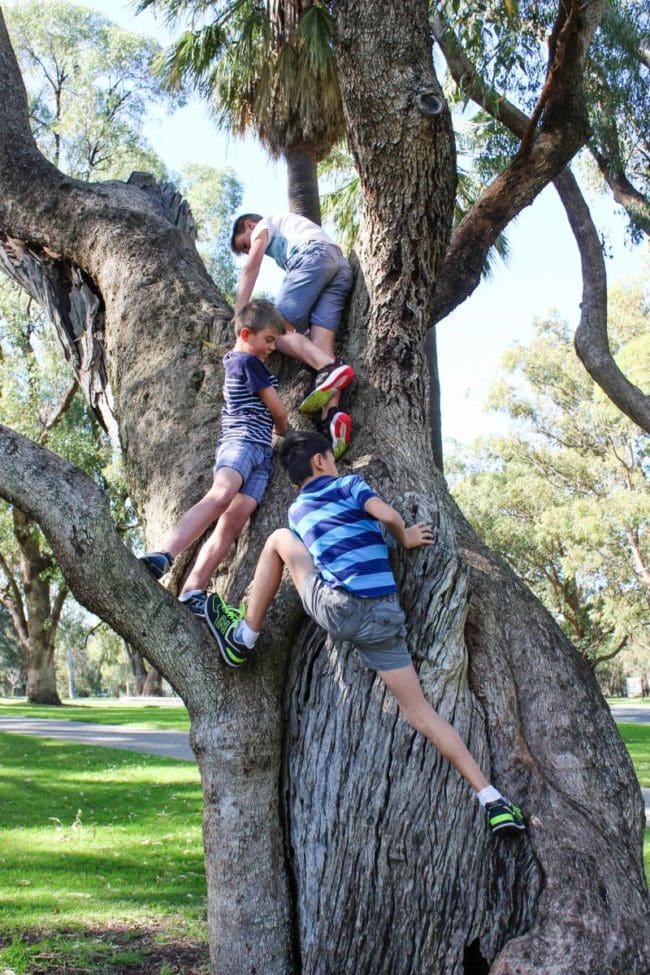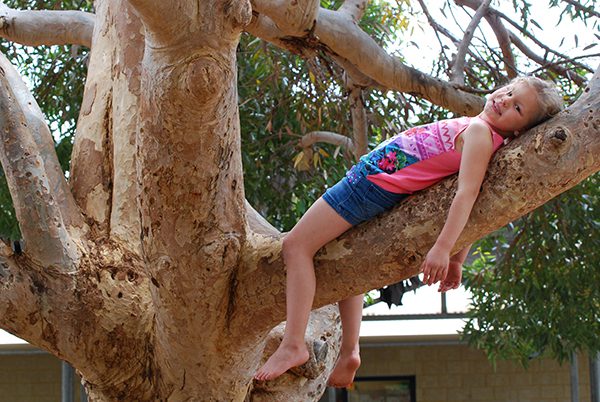On a recent family holiday my kids found it bemusing that I was paying so much attention to trees. We were in one of the most densely populated cities of the world. The local government had undertaken a streetscaping project more than ten years earlier and watching the trees and plants grow and thrive has been a source of absolute delight for me each time we visit. The trees offer a delightful contrast to the built environment, with shade, freshness, and gentle movement in what is usually a very humid and polluted city.
I find a similar joy in watching the new trees being planted along the sides of roads here in Perth. I appreciate the work of the WA Tree Canopy Advocates in pushing for a 30% tree canopy target by 2040, and turning Perth from the most barren city in Australia to one of the greenest. I delight in the idea of twice as many trees in our suburbs.
Trees are a free source of many things that delight a stressed adult – serene movement and sounds, coolness, fresh air, dappled light. In addition to all the adult reasons, we need to also recognise why trees are so important for kids. When we ask kids to describe what they’d like their places and spaces to look like, they always, without fail, say more trees. When they draw trees, they draw them tall and grand with huge canopies and usually with birds in them and families under them. Kids intrinsically know the value of trees. Babies are delighted by their gentle movement, bigger kids love the infrastructure they provide for cubbies, nature-based currencies and craft materials. They make the perfect home base for games and imaginary play.

The good news is that there are a few basic things we can do to provide our kids with the joy of climbing and playing in trees that will limit the chances of a fall.
Young climbers need to find the tree that is right for them. Finding the right tree is exciting and it may take some exploring and trialling to find the right one. Ideally, the right tree will have grass or leaves underneath, and it must have a branch that they can get to unassisted. Don’t lift your climber. If they can’t climb to the first branch, then they aren’t big enough for that tree and need to find a tree with a lower branch. The branches need to be thicker than the climber’s thigh (to hold their weight) and climbers need to keep three points of contact – two hands, one foot, or two feet one hand, or a bottom, hand and foot.
Many kids need to be encouraged to explore and try when starting out on tree climbing adventures. Adults can help by using positive language and building a sense of adventure. Instead of “be careful”, saying things like “What a gorgeous tree! How about we try it and see if it’s a good tree for you.” This kind of language also helps the kids to feel a connection to trees and place, which research shows us helps with resilience and well-being.
Perhaps most importantly, kids of all ages need to be encouraged to listen to themselves. Kids have a natural instinct to be cautious of heights. If their inner climber says it isn’t safe, it means this is not the right tree at this moment. This is the perfect opportunity to go on a tree hunt to find the right tree to climb. Trees don’t need to be conquered, they should be enjoyed, and it is the climber who should determine whether it’s an enjoyable experience or not. As their skill, strength and confidence grows, so will their desire to branch out and try different trees and different climbing play. The childhood right to climb a tree comes with tree-caring responsibility. Developing a sense of respect and care for trees is just as important as the physical development that allows for more adventurous climbs. Adults have an important role in helping young climbers to understand this and ensure trees and wildlife aren’t negatively impacted.
Bearing witness to the joy and sense of accomplishment of a young climber might be a potent enough kind of magic to convince you to reach for a strong and study branch. If nothing else, it’ll make the young climber feel better about their skills when they see you having a go!
If you really love the idea of kids climbing trees, perhaps consider planting a tree for the climbers of tomorrow. You will get the joy of watching the sapling grow and knowing that the benefits of that tree could live on for hundreds of years.

